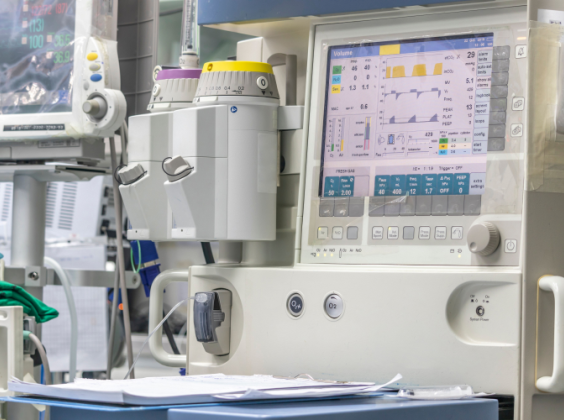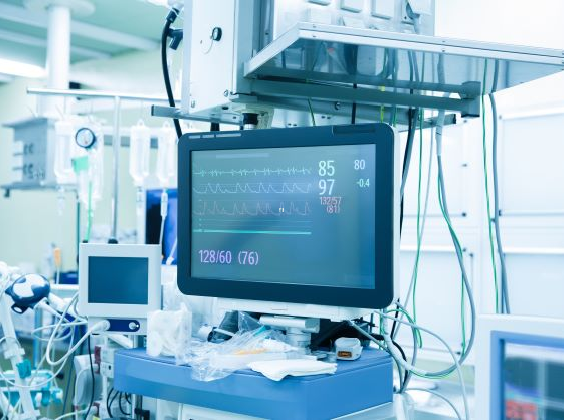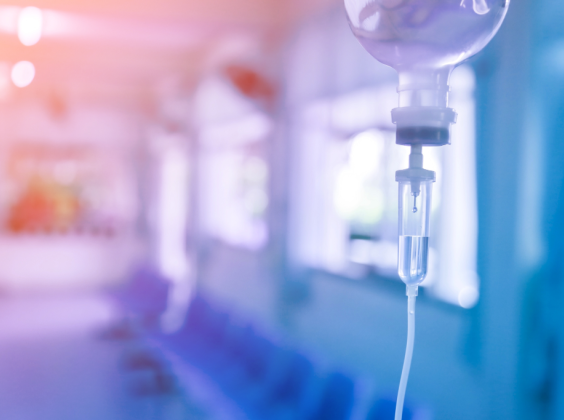
Written by

Cranfield, UK, June 2023 – The annual American Association of Critical Care Nursing (AACN) NTI conference was a hive of activity attended by an array of clinicians, nurses, product specialists and leading vendors in clinical care. Digitalisation, analytics, and methods to improve ICU care were at the forefront of discussions through educational symposiums and live product demonstrations. New product announcements and demonstrations were limited as vendors focused their attention on software updates and predictive algorithms to improve patient care.
Restricted healthcare resource and reduced staffing continues to be a driving force for product development and software improvement as vendors look into how to best improve clinical workflow and reduce staff burden, while maintaining high quality patient care. Manufacturers continued with their attempts to alleviate the burden on hospitals through the promotion of products that allow the seamless transition from hospital to home and bridge the gap from ICU to lower acuity wards.
Trend One: Wearable Technology Aids the Transition from Hospital to Home
Current developments in monitoring technology reflect the emphasis vendors are placing on reducing hospital burden and easing clinician workload. Physicians are increasingly able to monitor their patient’s vital signs from the comfort of the patient’s home. Masimo promoted its Radius VSM wearable system which combines temperature, heart rate, blood pressure, respiratory rate, and pulse oximetry monitoring into one solution, showcasing its widespread capability for remote monitoring. Masimo’s innovation, however, does not stop there; the wearable measure-on-inflation non-invasive blood pressure cuff provides measurements every 15 minutes, prioritising patient comfort and reducing constriction by initiating readings once systolic gradient is met. Furthermore, Masimo’s W1 wearable watch is the first of its kind to continuously monitor SpO2 utilising Masimo’s SETÆ technology. Compliance rates for at-home care patients remain less than ideal and continue to inhibit patient recovery. The continuous monitoring of vital signs using devices with a simplistic dashboard is gaining traction and the W1 is projected to increase the likelihood of compliance for patients that require long-term chronic care. The W1 is currently available for generic consumer use in the US and is pending 510k approval for medical use.
Trend Two: Adaptable Alarms are Prioritising High-Risk Patients and Patient Comfort
Reducing alarm fatigue and optimising alarm usage is a high priority for clinicians and nurses in the ICU. This trend was illustrated at length at AACN with numerous vendors taking this opportunity to display their innovative solutions to reduce alarm usage, in addition to educational symposiums demonstrating the importance of a quieter ICU to aid patient recovery.
Demonstrated at the show, Mindray launched the iAlarm in 2022 with the intent to reduce alarm fatigue and thus improving patient outcomes and comfort. The iAlarm aggregates patient data to provide alerts when patient conditions change and require action. The iAlarm aims to reduce the incidence of excessive alarms and allows customisation to improve operational workflow. Password protected customisable alarms can be used to highlight the most critical and urgent alarms, to ensure adequate care is met in a timely manner.
Innovative alarm solutions were also observed by Nihon Kohden who has expanded its alarm management systems to increase patient comfort during end-of-life patient provision through its ‚Äòcomfort care mode’, providing full monitoring without audio or visual alarms. Nihon Kohden has also introduced new algorithms to improve neonatal care to better detect high blood pressure in neonates.
Spacelabs’ exhibited its SafeNSound patient management solution with the capacity to provide retrospective data that can be utilised to improve operational efficiency. This data is expected to ease the transition across different care settings as the software can be used to provide a snapshot of the patients alarm data and indications of deterioration. Optimising alarm usage in the ICU is expected to remain a key consideration across critical care as clinicians and vendors alike take greater care in improving patient comfort and environment.
Trend Three: Predictive Monitoring and Early Warning Systems Reduce Patient Deterioration
Medtronic continued ‘business as normal’, despite the uncertainty surrounding it’s impending respiratory and monitoring spinoff. It demonstrated the RespArray multiparameter monitor launched earlier this year, to be used in procedural areas and emergency rooms. The RespArray solution monitors several parameters, including SpO2, ECG, capnography, and blood pressure. Indicative of a greater emphasis on personalised and customisable care, the RespArray has a configurable screen that can be customised and reprogrammed in accordance with clinician preferences. Further to this, the multiparameter monitor can be integrated into the hospital’s EMR, and an early warning score system can be implemented to prevent patient degradation and reduce hospital length of stay.
Spacelab’s acquisition of PeraHealth and its Rothman Index early warning score system was on full display. Spacelabs is focusing on the growing need for clinical decision support and utilised the tradeshow as an opportunity to provide live demonstrations and showcase the capabilities and benefits of its solution during the exposition. The Rothman Index uses AI analytics to predict the trajectory of a patient’s condition, allowing clinicians to prioritise the treatment of most critical patients. Patient prioritisation is an ever-growing trend and has proven to be in high demand as technological advancements in critical care evolve.
Nihon Kohden also took to the stage to exhibit the AI-based software launched through the acquisition of AMP3D, CoMET (Continuous Monitoring of Event Trajectories) which is proven to reduce the risk of sepsis by 50%. The solution can aggregate over two million data points to promote the early intervention of high-risk patients. Currently only available in the US, Nihon Kohden has plans to expand this solution beyond hospital units to the eICU market. Staffing issues have highlighted the need for greater patient visibility and demand for virtual ICUs continues to grow. Remote monitoring of patients and a greater push to move lower-risk patients out of the ICU is driving demand for these digital applications. As demand for telemetry-based solutions and virtual ICUs grow, innovative companies are expected to launch fully integrated devices, providing continuous monitoring and patient predictive insights.
Trend Four: Software Innovation is Expected to Dominate Future Tradeshows
The lack of new product launches was not unnoticed and calls into question which platform is best for vendors to demonstrate their clinical offering to decision makers and medical health professionals alike. Understandably, software releases, updates and device upgrades took precedence for most vendors, who utilised the exposition to highlight key trends such as the prioritisation of high-risk patients, data-centric clinical decision support, and greater hospital visibility. The critical care market is seeing a greater shift towards integrated and interoperable solutions as healthcare resource and provision remain limited, resulting in a greater display of digital solutions in future shows.
Related Research
Signify Research has recently published its Anaesthesia Devices -World – 2023 and Ventilators – World – 2023 reports, which both build on our 2021 editions of the reports. Signify Research is also in the process of updating its market analysis of the patient monitor market in its upcoming report Patient Monitors – Interim Report – 2023. The reports provide a data-centric and global outlook of the market. The reports blend primary data collected from in-depth interviews with healthcare professionals and technology vendors to provide a balanced and objective view of the market.
About Tosin Alex-Duduyemi
Tosin joined Signify Research in 2022 as a Market Analyst within the Clinical Care team. She holds a bachelor’s degree in Biological Sciences from the University of Birmingham & has prior experience working in primary and secondary education.
About the Clinical Care Team
The clinical care team provides market intelligence and detailed insights on the clinical care equipment and IT markets. Our areas of coverage include patient monitoring, diagnostic cardiology, infusion pumps, ventilators, anaesthesia devices, and high-acuity IT. Our reports provide a data-centric and global outlook of each market with granular country-level insights. Our research process blends primary data collected from in-depth interviews with healthcare professionals and technology vendors, to provide a balanced and objective view of the market.
About Signify Research
Signify Research provides healthtech market intelligence powered by data that you can trust. We blend insights collected from in-depth interviews with technology vendors and healthcare professionals with sales data reported to us by leading vendors to provide a complete and balanced view of the market trends. Our coverage areas are Medical Imaging, Clinical Care, Digital Health, Diagnostic and Lifesciences and Healthcare IT.
Clients worldwide rely on direct access to our expert Analysts for their opinions on the latest market trends and developments. Our market analysis reports and subscriptions provide data-driven insights which business leaders use to guide strategic decisions. We also offer custom research services for clients who need information that can’t be obtained from our off-the-shelf research products or who require market intelligence tailored to their specific needs.
More Information
To find out more:
E: enquiries@signifyresearch.net
T: +44 (0) 1234 986111
www.signifyresearch.net


